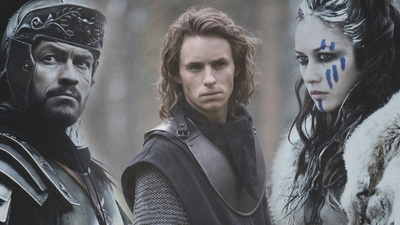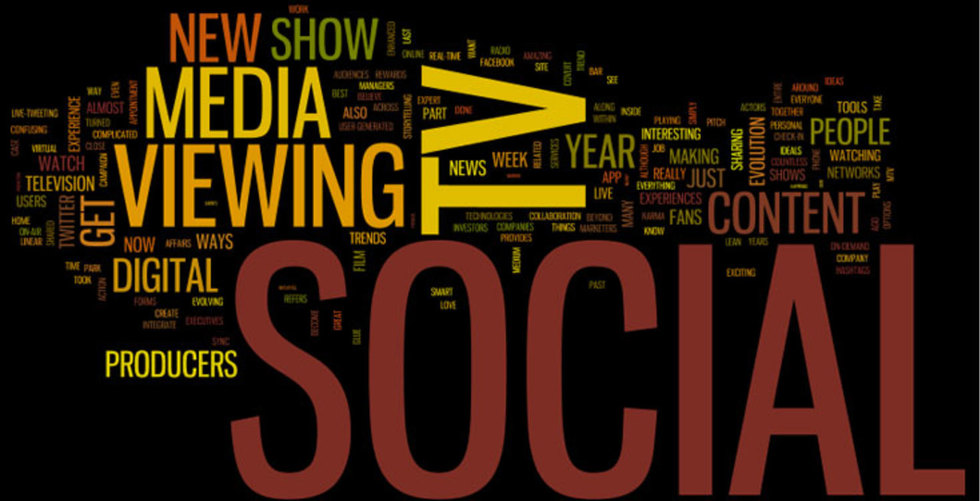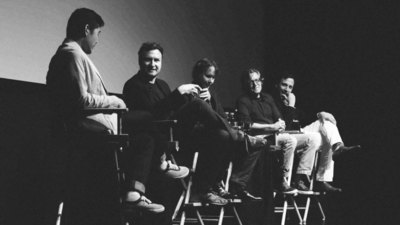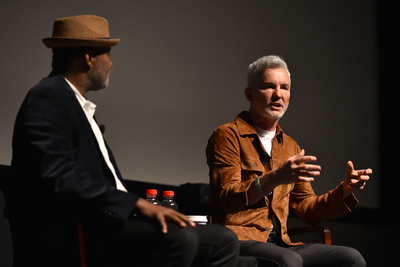
BY JACOB SHWIRTZ |
This Isn’t Your Grandmother’s Social Media Revolution
The Director of Social Viewing for MTV Networks breaks down the difference between 'social viewing' and 'social TV.' Who knew?

Over the past year we’ve seen countless articles, conferences and conversations revolve around Social TV, social viewing, co-viewing, multi-screen experiences, companion apps, check-in services, smart TV guides and more. Specifically, my goal is to untangle this complex web of terms, trends and technologies that have entwined the digital and media industries over the last year.
The Jewish New Year and the one-year anniversary of my job at MTV Networks both fell within a week of each other, and provided a double reason for the personal reflection that turned into this article.
Media companies are scrambling to get a grip, as a seemingly endless supply of investors is bankrolling the countless nearly identical ventures that champion these trends. I was excited to accept the unique job title of Director of Social Viewing twelve months ago, with the mission of becoming in-house expert and leader on everything related to the connection between social media and television. And that’s what it’s all about: while the matrix of Social TV is both complicated and confusing, at its core, the term is about the relationship of social media and television.
The Complicated
In “social media” the “media” is “social” – meaning that the content is user-generated, personal, personalized, shared by, for and among social connections. Think Facebook – the company doesn’t create content; it provides the medium for people to be social. The media is social. In “Social TV” the “TV” is both the delivery mechanism as well as the content, while the “social” is a reference to social media’s ideas, ideals and infinite iterations.
The Confusing
Not only is social media evolving, but the “TV” in “Social TV” refers to two very different things: content and consumption. That is precisely why I’ve recently come to believe that “Social TV” and “social viewing” are wholly separate trends. This distinction forces us to reevaluate what we’ve all been pontificating over during the last, buzz-filled year.
Social Viewing
Almost everything you’ve heard about Social TV is actually social viewing. At its best, social viewing provides fans with enhanced ways of enjoying, consuming and sharing the TV content they love. At its worst, social viewing is just a digital marketing gimmick. In any case, it’s the site producers, social media managers and digital marketers that “do” social viewing.
This trend encompasses all the following start-ups, vendors, services and campaigns: Get Glue, Go Miso, IntoNow, Philo, Tuner Fish, Clip Sync, Snappy TV, TVGuide.com, TV Plus, Bee.TV, i.tv, Social Guide, Media Sync, TweePlayer, Umami, Flingo, CBS Tweet Week, HBO Connect, NBC Live, Discovery Shark Week, and many, many more.
Social viewing also refers to everyone from Howard Stern and Anthony Bourdain to regular folks live-tweeting. Social viewing is also using hashtags on-air.
None of that is Social TV!
Social viewing is an exciting evolution of social media, in that it encourages a return to appointment television. Just a few years ago, you could credibly get mad at someone for “spoiling” the ending to a show. Now the tables have turned and people can no longer demand not to get spoiled. It’s simply become too difficult to not know what happened about anything, anywhere, including who was voted off the island. You’d have to ignore Facebook and Twitter entirely, which is not something any of us do regularly (although Yom Kippur was a nice break).
We now revel in the new era of shared TV viewing across distances. Many people follow along on Twitter while watching their favorite shows and love the enhanced experiences new technologies offer. Most watch TV while a laptop, smart phone or tablet is within close reach.
Beyond appointment viewing, for those who watch DVR’d or other forms of on-demand content, there are also new, social offerings to take advantage of. New tools are offering interesting ways to organize and recommend content on-demand, viewers can “check-in” and often get virtual rewards for sharing viewing decisions, and other tools are archiving social data for use in visualizations and other experiences that live on beyond a show’s premiere.
This really is an exciting and evolving trend that won’t disappear any time soon.
Naysayers believe people ultimately want to simply “watch what they want to watch and that’s it” – the “lean back” school of thought. Sure, most people won’t adopt all the new “lean forward” tools, but fans are and will always be interested in proving their knowledge, sharing thoughts and insights with others, playing games, gaining rewards for watching (virtual or real) and other forms of engagement around TV viewing. Just look at the trending topics list on Twitter every single night of the week: proof of lots of people live-tweeting while watching TV.
This past year has offered an amazing surge in social viewing options and those new options have deservedly received a massive amount of attention, buzz, funding by investors and adoption by media companies and their consumers. I am extremely proud to play a part in this industry and to be doing so at a company so open to experimentation as MTV Networks.
Social TV
As groundbreaking as social viewing is, and as happy as I am to be an expert in it, Social TV blows that all away. Social TV is where things really get interesting (“you call that a knife?”), and it’s where we have almost no idea what we’re doing. Whereas social viewing is the purview of site producers, social media managers and digital marketers, Social TV is “done” by network and programming executives and show producers, with the close collaboration of digital natives.
Social TV is the fusion of TV-making and social media. And remember, “social media” is where “media” is “social.” In my view, “Social TV” is short-form for “social media TV” – a medium, an ideal where TV content is somehow “social.” Whatever that means… who knows? But I know it when I see it. And it isn’t hashtags on TV. And it isn’t Get Glue badges.
The distinctions I’m trying to explain have similarities in the evolution of TV news. At first, TV news was just a camera placed in front of radio newsreaders. It took years for TV producers to realize the new medium’s potential. Now TV news has almost no similarity to radio news. In the same way, Social TV empowers an altogether new type of storytelling.
Social TV is where social media and TV content – the creation of content for television – is intrinsically, inextricably linked from the very beginning, from the initial pitch of the show concept. Social Viewing is bolted on afterwards by “digital” departments. Making Social TV starts with making TV.
Making Social TV
Although we are just scratching the surface, there have been a few experiments in Social TV during 2011: Bar Karma, 106 & Park, the Inside Social Film Experience and Covert Affairs.
Current TV’s Bar Karma experiment saw an entire show get created by fans. Spearheaded by Albie Hecht and Will Wright, the show creators outlined its vision and then let users take over. In an entire online experience, people could pitch and vote on storylines, plot points, character names, and even the best ways to integrate sponsors. Throughout each episode, a lower-third graphic gave credit to the community members responsible for what was on-screen.
BET’s 106 & Park has an amazing mobile offshoot that the producers work very hard to integrate into the live, daily show. They don’t promote the app during “promo time,” but rather introduce it as an intrinsic part of the show. Celebrity guests play with the app on-air, app users at home get phone calls directly from the show hosts, and a digital producer works hand-in-hand with the production staff on all related issues.
Intel’s Inside recruited Hollywood actors and producers to create a product that lived up to its tagline of “a social film experience.” Users at home followed along with the drama, playing out in real-time across several social networks. Fans were invited into the action with their webcams and acted as detectives to help solve the mystery. A few weeks after the real-time action ended, a fully edited film was released (online) that wove together the scripted and user-generated content.
USA’s Covert Affairs ran a great campaign over the summer that blended together digital and linear storytelling. Show producers and actors took active roles in a web-based extension of the linear show. USA is now running an even more immersive campaign for the show Psych.
Other case studies worth consideration are SpongeBob’s Twitter Tales, Syfy’s Haven and NBC’s The Voice. New initiatives that haven’t really launched, but may prove interesting, include Warner Brothers’ Aim High and Mark Burnett’s YouToo.
Conclusion and Predictions
Without realizing it, when everyone predicted 2011 as the year of Social TV, we got Social Viewing. That was a necessary step. It laid the groundwork for new ideas, new methods of collaboration and new ways of communicating with audiences of audiences.
2012 is the year of Social TV. Executives will begin to see and understand the great work done in social viewing by their “digital teams” and start asking: “So how should that affect what shows we’re pitching, green lighting and creating?” and “So how should the way we produce, cast, shoot and structure our shows change?”
Social viewing is the evolution of social media. Social TV is the evolution of TV. And because of that, I can make another prediction. If 2012 is the year of Social TV, then by 2015 we’ll have the year of TV. We won’t need the “social” label anymore, because its ideals will become an everyday part of making TV.
This post originally appeared on Lost Remote.

